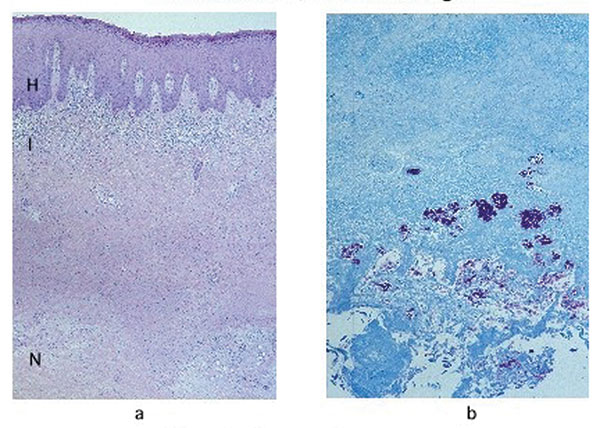Volume 9, Number 6—June 2003
Research
Histopathologic Features of Mycobacterium ulcerans Infection
Figure 1

Figure 1. a, Hematoxylin and eosin stain of a lesion specimen showing definitive Buruli ulcer disease in the preulcerative stage (original magnification 50x). Notice the psoriasiform epidermal hyperplasia (H), superficial dermal lichenoid inflammatory infiltrate (I), and necrosis of subcutaneous tissues (N). b, Ziehl-Neelsen stain of the same nodule, showing abundant colonies of acid-fast bacilli in the necrotic subcutaneous tissues (original magnification 100x).
Page created: December 21, 2010
Page updated: December 21, 2010
Page reviewed: December 21, 2010
The conclusions, findings, and opinions expressed by authors contributing to this journal do not necessarily reflect the official position of the U.S. Department of Health and Human Services, the Public Health Service, the Centers for Disease Control and Prevention, or the authors' affiliated institutions. Use of trade names is for identification only and does not imply endorsement by any of the groups named above.